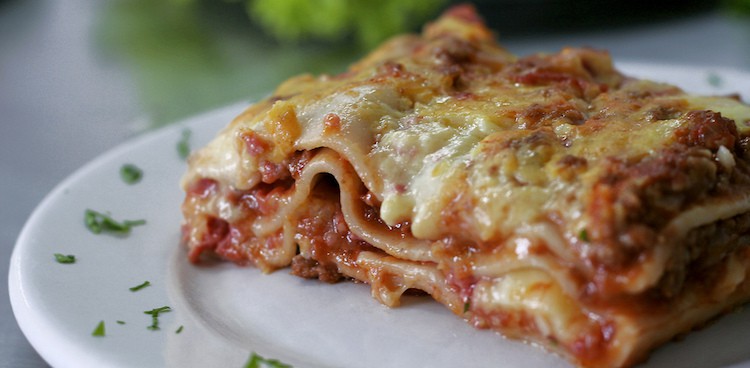
There are endless reasons to travel the world, but one always stands out: food. Get Cultured takes you on a journey through cheesy dishes from different cultures (heyo), exploring how they came to be, what makes them significant, where you can find the real deal, and how you can make your own.
Missed last week’s post on Welsh rarebit? Check it out!
Lasagna, a staple of trattorias and hometown dinner tables alike, is a baked Italian pasta dish, layered with flat pasta sheets, cheese, and tomato sauce. It’s irresistible—the poster child for decadent Italian meals—so let’s talk about how it all began.
You may recall the story of one ancestor of lasagna—in the Roman Empire, Cato the Elder recorded the recipe for placenta (pronouced plah-kehn-tah) in On Agriculture, which laid groundwork for lasagna by laying tracta (strips of thin dough) for dollops of ricotta and honey. (Cato also preached against freedom for women and maintained a strict anti-Hellenic attitude, but we’ll let that go for now—for the sake of lasagna.) While this dish more directly gave rise to tiropita, the similarity of these tracta to lasagna noodles is no coincidence.
The word lasagna, though, likely comes to us by way of ancient Greece. Laganon, in Greek, was a flat sheet of pasta cut into strips, and lasanon was the word for chamber pot. The jury is out on which the dish is named for—the shape of the pasta or the similarity of the vessel it was cooked in during its early days to a much less food-safe pot—but in either case, an early Greek prototype likely existed under one of these names and subsequently made its way to the Roman repertoire.
Bizarrely, the first known recorded recipe for lasagna appeared in a medieval British recipe book from 1390—apparently, King Richard II was a fan of cheesy, filling meals. This recent discovery captured the hearts of British lasagna lovers, allowing space for them to lay claim to the decadent dish. Italy, however, wasn’t havin’ it. In response, the Italian Embassy in London pulled out a 1316 reference to an Italian lasagneuse named Maria Borgogno. Sorry, Britain.
So the origins of the dish are hazy and, in all likelihood, multiple. One thing we do know, though, is that lasagna was born tomatoless. Tomatoes, a member of the nightshade family of plants, were widely thought to be poisonous until around the 16th century, when herbalist Pietro Mattioli wrote that they were best eaten with salt and oil, and it wasn’t until the late 17th century that tomatoes were included in a printed recipe. So whether our lasagna came to be in ancient Greece, medieval Italy, or King Richard’s kitchen, tomatoes weren’t around during its formative years.
None of these segments of lasagna’s origin story quite does justice to the dish as we know it today. For those of you who aren’t familiar with the dish—well, first, I’d like to say I’m terribly, terribly sorry. What you’ve been missing is the Holy Grail: Lasagna consists of flat layers of pasta interspersed with tomato sauce, ricotta, and meat or veggies and topped with mozzarella. The whole structure is baked, resulting in a warm, hearty interplay of tastes and textures that combines all the best parts of Italian cooking.
It’s hard not to find a good lasagna on an Italian dinner menu, and it’s also a ubiquitous comfort food in Italian homes. Personally, I can’t imagine a better evening than strolling around the Piazzale Michelangelo and then settling down to feel the air get cool around me with a plate of lasagna on the table.
I can’t say with confidence where the best lasagna in Italy resides—I have tasted countless pieces of evidence that calling a top dog is near-impossible to do, especially given the variation among regions (some add béchamel sauce, many sprinkle on nutmeg, some swap tomato sauce for white sauce, etc.), not to mention among individual restaurants and chefs. On the bright side, that means that you can find a phenomenal lasagna with your eyes closed. So, for this one, I will leave you to the magical feeling of stumbling into a hole-in-the-wall trattoria and leaving wide-eyed and full to bursting.
In the North End of Boston, the prognosis is similar—it’s hard to find a bad lasagna in the charming Italian neighborhood. Go forth, explore, and eat. And when it’s too hot to do that, make your own summery version of the dish!
Feature Photo Credit: Eve Dias | CC





